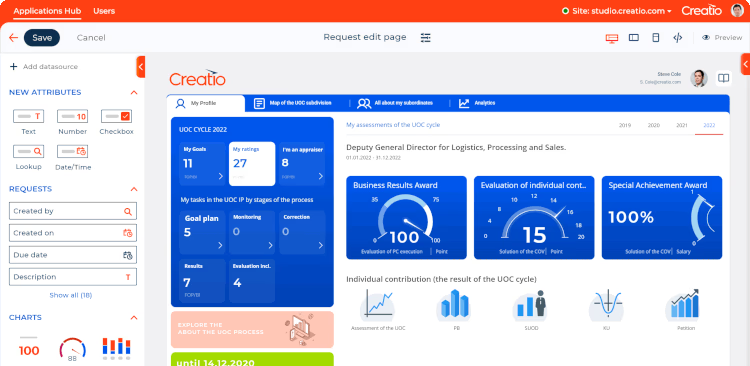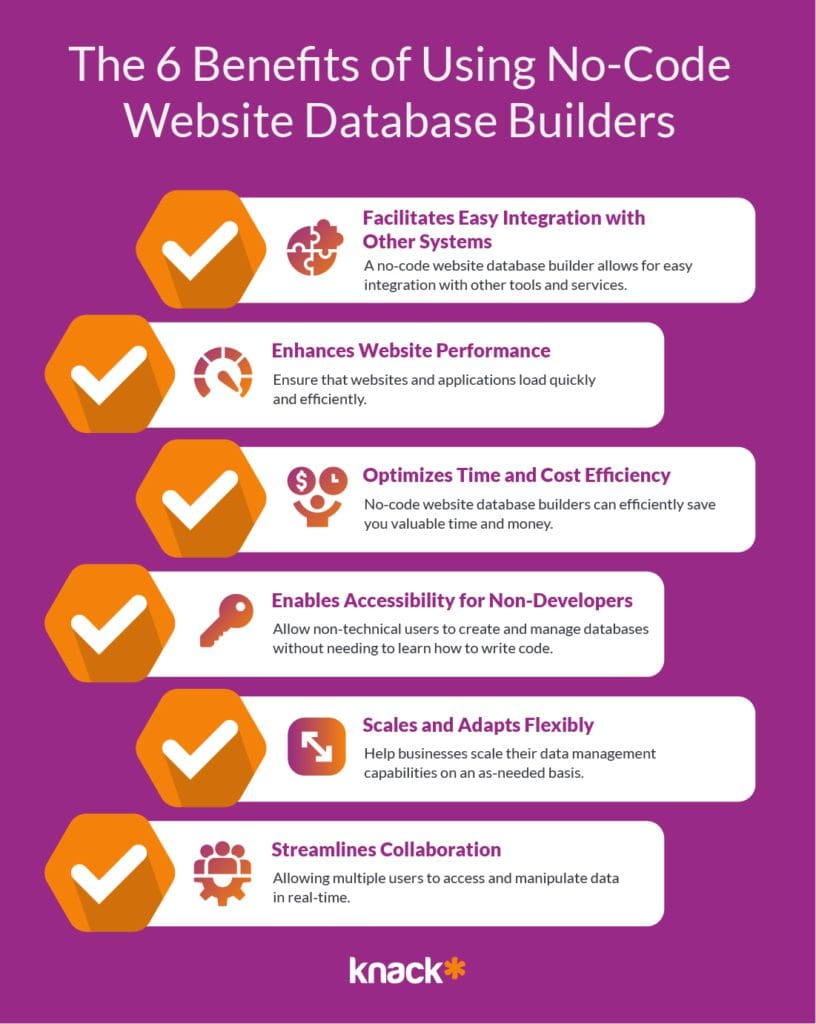No-Code Open System Data Source Production: Encouraging Businesses to Construct Faster
No-Code Open System Data Source Production: Encouraging Businesses to Construct Faster
Blog Article
Exploring the Benefits of Scalable Data Sources That Require No Coding Skills for Efficient Information Management Solutions
The appearance of scalable data sources that get rid of the need for coding abilities provides a transformative opportunity for organizations looking for reliable information monitoring options. By allowing non-technical individuals to harness the power of data through intuitive user interfaces, these systems improve availability and foster cooperation throughout varied teams. In addition, their cost-effectiveness and flexibility to progressing organization needs can substantially streamline functional procedures. As we consider the ramifications of such developments, it comes to be vital to check out how they can improve the landscape of data administration and drive sustainable development in an affordable atmosphere.
Enhanced Access for Customers
Improved ease of access for individuals is a vital facet of scalable data sources, ensuring that data management systems are easy to use and intuitive. In an era where data-driven choices are extremely important, access permits a bigger series of customers, consisting of those without comprehensive technical know-how, to involve with database systems efficiently. This democratization of information accessibility promotes enhanced cooperation throughout departments, equipping staff members to extract insights and make educated choices.
Easy to use interfaces, such as drag-and-drop attributes and aesthetic data depiction, simplify intricate data communications. These enhancements decrease the learning contour related to conventional database management, enabling users to concentrate on leveraging information as opposed to grappling with technical complexities. Scalable databases usually incorporate adjustable dashboards and real-time analytics, providing customers with prompt insights tailored to their details demands.

Cost-Effectiveness and Resource Cost Savings
Reliable information administration not only hinges on accessibility however also on cost-effectiveness and resource savings. Scalable databases designed for users without any coding abilities significantly lower financial problems commonly related to traditional data source monitoring systems. By getting rid of the requirement for specialized programs know-how, companies can allot their resources extra successfully, concentrating funds on core service activities as opposed to considerable training or hiring experienced personnel.
Furthermore, these data sources often use cloud-based options, which even more minimize prices associated with hardware and upkeep. Organizations can scale their data source solutions according to their needs, preventing the expenses sustained from over-provisioning resources. This versatility implies companies can adapt to transforming demands without sustaining unneeded prices, bring about considerable lasting savings.
Furthermore, user-friendly interfaces enhance information entry and monitoring procedures, decreasing the moment invested in administrative jobs. This performance converts into labor price savings, allowing teams to concentrate on calculated efforts instead than routine upkeep. Generally, adopting scalable data sources that need no coding abilities fosters a much more economical technique to information monitoring, allowing companies to optimize their sources while keeping high degrees of functional effectiveness.
Improved Cooperation Across Teams

Moreover, scalable databases promote smooth communication amongst team members. With user-friendly interfaces that need no coding abilities, employees can easily produce, modify, and share records or dashboards customized to their certain requirements. This democratization of data empowers non-technical customers to contribute understandings, boosting the click this site collective atmosphere.
Furthermore, these databases support simultaneous gain access to, allowing multiple users to work on the exact same dataset all at once. This feature enhances productivity, as groups can participate in joint information evaluation without the danger of version control concerns. The ability to leave remarks or notes directly within the database further promotes dialogue and clears up data interpretations.
Streamlined Information Administration Processes
In today's data-driven atmosphere, organizations identify the requirement of streamlined data monitoring refines to take full advantage of effectiveness and accuracy. By leveraging scalable databases that need no coding skills, organizations can streamline their data handling and minimize the complexities normally related to standard database systems. This ease of access encourages non-technical users to involve straight with data, facilitating quicker decision-making and decreasing reliance on specialized IT employees.
Streamlined data administration procedures enhance process by automating routine tasks such as data entrance, validation, and coverage. Automated information assimilation makes sure that information from numerous sources is aggregated flawlessly, removing silos and cultivating a linked sight of crucial service metrics (no-code). Additionally, straightforward user interfaces permit employees to manipulate information easily, allowing them to produce insights that drive calculated campaigns without the need for considerable training.
This effectiveness not just accelerates functional processes however also reduces the potential for human error, ensuring that information remains reliable and precise. Inevitably, structured information administration procedures with scalable data sources bring about boosted efficiency, permitting companies to concentrate on core tasks while making certain that their data monitoring methods are effective and effective.
Scalability for Growing Organizations

For expanding enterprises, the capability to scale up or down is important. A scalable data source can handle an influx of data produced from new clients, items, or solutions, guaranteeing that service operations continue to be uninterrupted. Furthermore, these databases offer the capacity to take care of peak lots effectively, which is necessary during durations of quick growth or seasonal spikes.
Furthermore, many scalable database remedies are developed with user-friendly interfaces that require no coding skills, equipping non-technical team to take care of data efficiently (no-code). This democratization of information management allows organizations to allot sources purposefully and minimize reliance on specialized IT personnel
Eventually, adopting a scalable data source not just improves operational performance yet additionally cultivates an environment where companies can advance and introduce without the constraints of typical database systems. This versatility placements organizations for long-term success in today's affordable landscape.
Verdict
Finally, scalable databases that call for no coding skills supply substantial advantages for effective information monitoring. These systems improve accessibility for non-technical individuals, lower operational prices, and promote cooperation throughout teams. By simplifying information monitoring processes and using scalability for growing companies, such options enable organizations to adjust to altering demands effectively. Eventually, the adoption of these easy to use data sources cultivates development and settings organizations for long-term success in a vibrant environment.
Enhanced access for customers is an essential aspect of scalable data sources, making certain that data administration systems are instinctive and straightforward.User-friendly user interfaces, such as aesthetic information and drag-and-drop features representation, streamline complicated data communications. In general, adopting scalable data sources that require no coding abilities promotes a more economical strategy to data monitoring, making it possible for companies to optimize their resources while maintaining high degrees of functional performance.
By leveraging scalable databases that call for no coding abilities, discover this services can simplify their data handling and decrease the complexities usually associated with traditional database systems - no-code.Structured data monitoring processes improve operations by automating routine jobs such as data entrance, validation, and coverage
Report this page